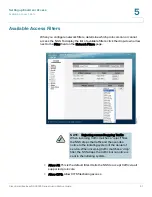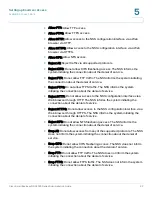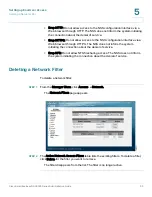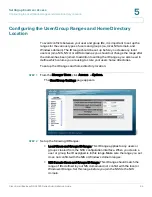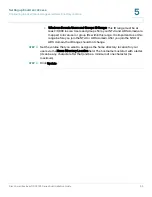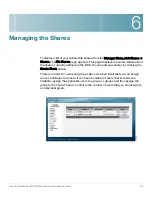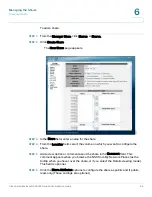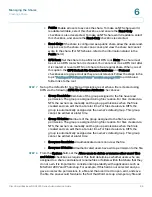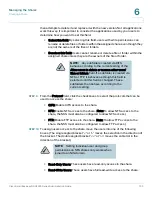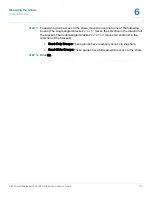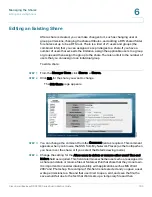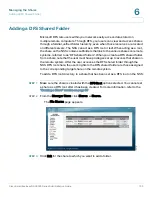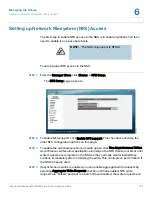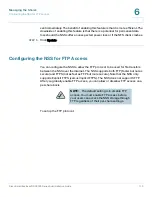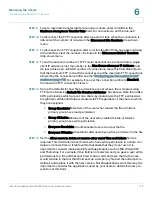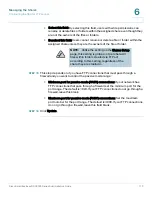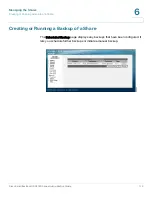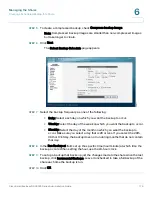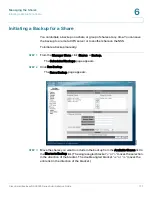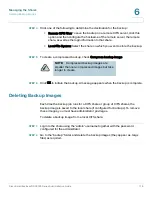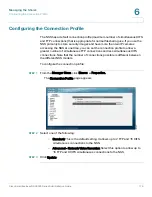
Managing the Shares
Editing an Existing Share
Cisco Small Business NSS2000 Series Administration Guide
104
6
•
Everyone Writable: All authenticated users have read-write permissions for
the file.
STEP 7
From the Protocol field, click the checkboxes to select the protocols that can be
used to access the share:
•
CIFS: Enable CIFS access the share.
•
NFS: Enable NFS access the share. (Note: To allow NFS access to the share,
the NSS must also be configured to allow NFS access.)
•
FTP: Enable FTP access to the share. (Note: To allow FTP access to the
share, the NSS must also be configured to allow NFS access.)
STEP 8
Move any usernames that you want to have access to the share from the User list
into one of the following boxes. (The single angled bracket "<" or ">" moves the
selection in the direction of the bracket. The double angled bracket "<<" or ">>"
moves the entire list in the direction of the bracket.)
•
Read-Only Users: Usernames that appear in this list have read-only access
to the share.
•
Read-Write Users: Usernames that appear in this list have read-write
access to the share.
STEP 9
Use the last two tables in the window to set up your group permissions for the
share. Move any groups that you want to have access to the share from the left
side of the page into one of the following. (The single angled bracket "<" or ">"
moves the selection in the direction of the bracket. The double angled bracket "<<"
or ">>" moves the entire list in the direction of the bracket.)
•
Read-Only Groups: Groups that appear in this list have read-only access to
the share.
•
Read-Write Groups: Groups that appear in this list have full read-write
access to the share.
STEP 10
Click OK.


